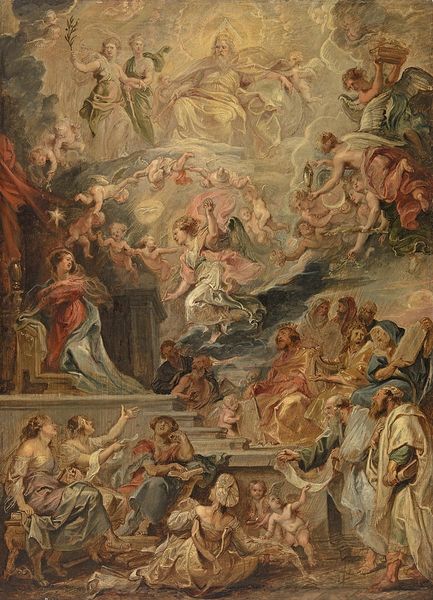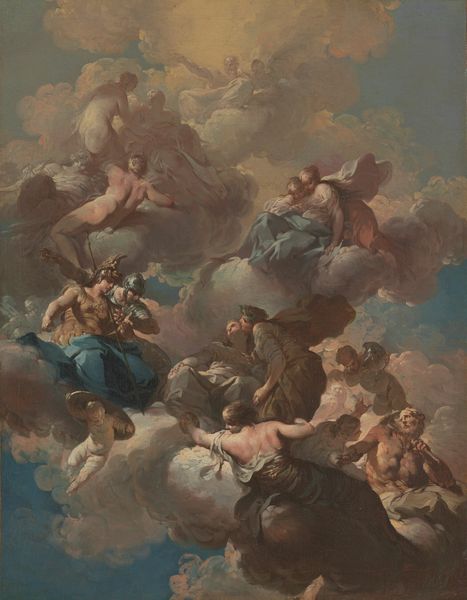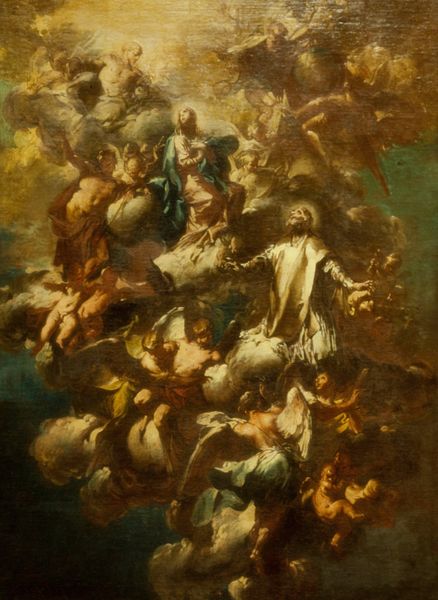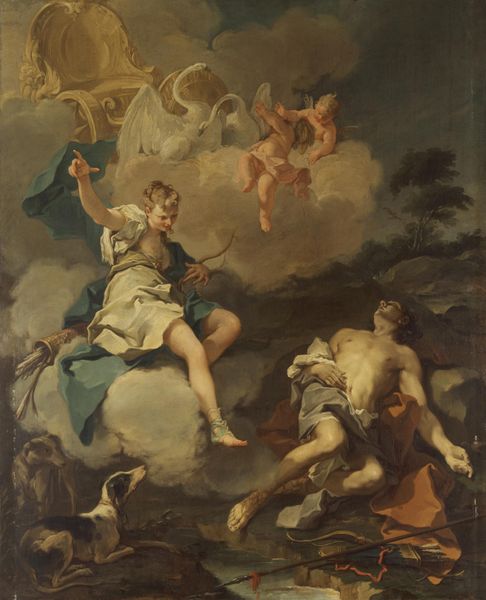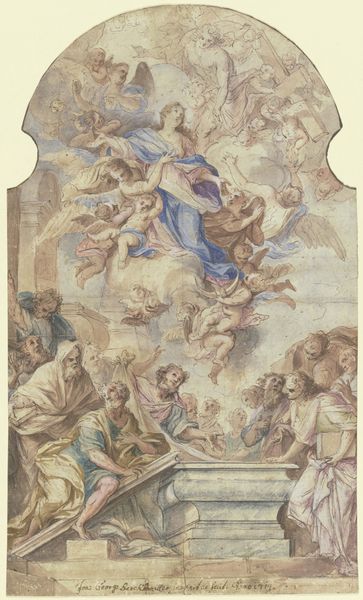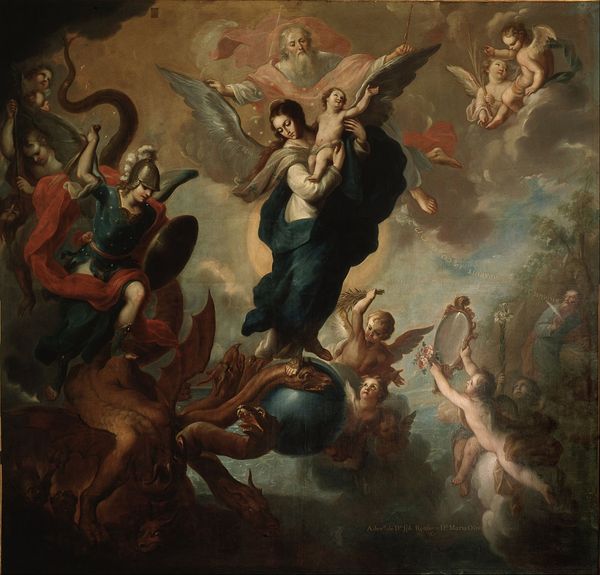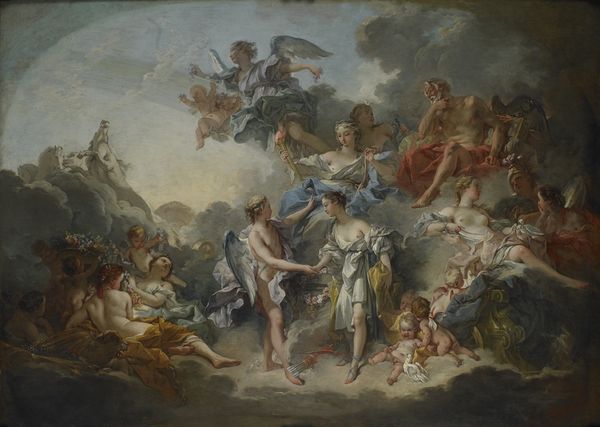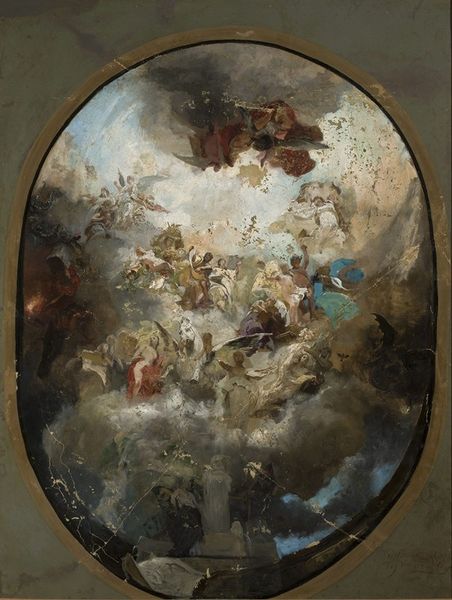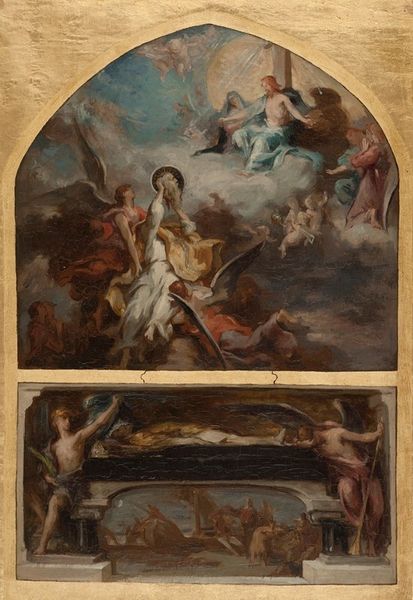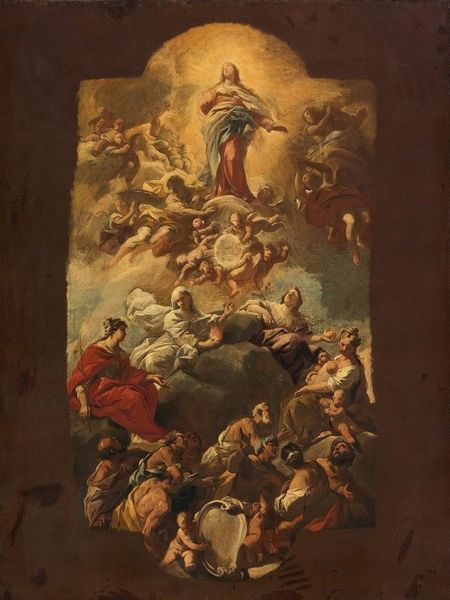
painting, oil-paint
#
portrait
#
allegory
#
baroque
#
painting
#
oil-paint
#
figuration
#
oil painting
#
chiaroscuro
#
painterly
#
history-painting
Dimensions: height 149 cm, width 75 cm, thickness 3.8 cm, depth 6 cm
Copyright: Rijks Museum: Open Domain
Editor: Here we have "The Glorification of Saint Dominic," an oil painting by Francesco Solimena, dating from around 1710 to 1785. I'm immediately struck by its theatrical composition and how it blends earth with the heavens. What do you see in this piece, considering its historical context? Curator: This painting functions as a potent example of Baroque art’s utilization within Counter-Reformation strategies. Observe the clear visual hierarchy – Saint Dominic elevated amidst divine figures, literally and figuratively towering above earthly concerns. Consider how the Church deployed such imagery. What societal message was Solimena reinforcing through this glorified depiction of Saint Dominic and the established order? Editor: So it’s more than just a pretty picture; it's propaganda in a way? Were these kinds of paintings common then? Curator: Precisely. "Propaganda" might be a strong word, but it served a didactic purpose, reinforcing religious dogma and papal authority. Scenes of saints’ apotheoses and allegorical representations of the triumph of faith were incredibly common during this period. The museum context now inevitably alters the function, doesn't it? It is no longer solely devotional, but a cultural artifact viewed within a secular, aesthetic framework. Do you notice how the artist is guiding our eye? Editor: Definitely, the way light and shadow emphasize certain figures and actions feels deliberate, like a carefully staged performance. This feels intended for an audience. Curator: Precisely. Reflect on the role patrons played in dictating such depictions. Powerful figures often commissioned artwork to legitimize their own authority by association, intertwining religious virtue with temporal power. How does that change our view of this work today? Editor: I hadn’t thought about it that way, but it's true that understanding the context makes it much more meaningful than simply admiring its aesthetics. Curator: And understanding the power structures can bring a richer sense of what role paintings played in shaping societies and their values.
Comments
No comments
Be the first to comment and join the conversation on the ultimate creative platform.
